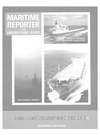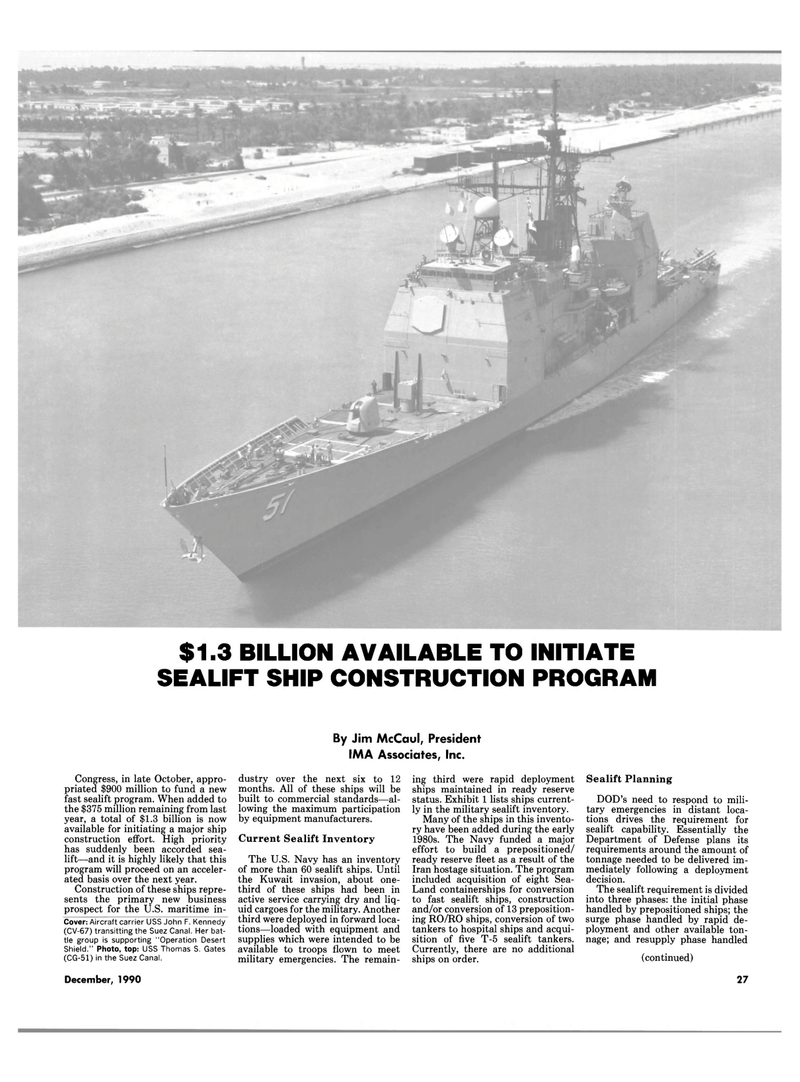
Page 25: of Maritime Reporter Magazine (December 1990)
Read this page in Pdf, Flash or Html5 edition of December 1990 Maritime Reporter Magazine
$1.3 BILLION AVAILABLE TO INITIATE
SEALIFT SHIP CONSTRUCTION PROGRAM
By Jim McCaul, President
IMA Associates, Inc.
Congress, in late October, appro- priated $900 million to fund a new fast sealift program. When added to the $375 million remaining from last year, a total of $1.3 billion is now available for initiating a major ship construction effort. High priority has suddenly been accorded sea- lift—and it is highly likely that this program will proceed on an acceler- ated basis over the next year.
Construction of these ships repre- sents the primary new business prospect for the U.S. maritime in-
Cover: Aircraft carrier USS John F. Kennedy (CV-67) transiting the Suez Canal. Her bat- tle group is supporting "Operation Desert
Shield." Photo, top: USS Thomas S. Gates (CG-51) in the Suez Canal. dustry over the next six to 12 months. All of these ships will be built to commercial standards—al- lowing the maximum participation by equipment manufacturers.
Current Sealift Inventory
The U.S. Navy has an inventory of more than 60 sealift ships. Until the Kuwait invasion, about one- third of these ships had been in active service carrying dry and liq- uid cargoes for the military. Another third were deployed in forward loca- tions—loaded with equipment and supplies which were intended to be available to troops flown to meet military emergencies. The remain- ing third were rapid deployment ships maintained in ready reserve status. Exhibit 1 lists ships current- ly in the military sealift inventory.
Many of the ships in this invento- ry have been added during the early 1980s. The Navy funded a major effort to build a prepositioned/ ready reserve fleet as a result of the
Iran hostage situation. The program included acquisition of eight Sea-
Land containerships for conversion to fast sealift ships, construction and/or conversion of 13 preposition- ing RO/RO ships, conversion of two tankers to hospital ships and acqui- sition of five T-5 sealift tankers.
Currently, there are no additional ships on order.
Sealift Planning
DOD's need to respond to mili- tary emergencies in distant loca- tions drives the requirement for sealift capability. Essentially the
Department of Defense plans its requirements around the amount of tonnage needed to be delivered im- mediately following a deployment decision.
The sealift requirement is divided into three phases: the initial phase handled by prepositioned ships; the surge phase handled by rapid de- ployment and other available ton- nage; and resupply phase handled (continued)
December, 1990 27

 24
24

 26
26
